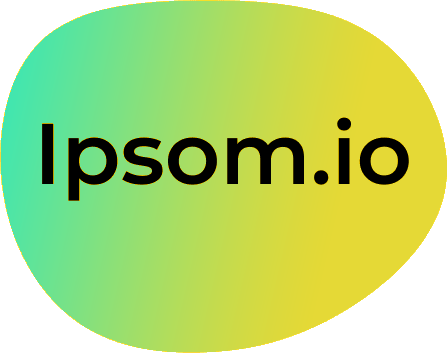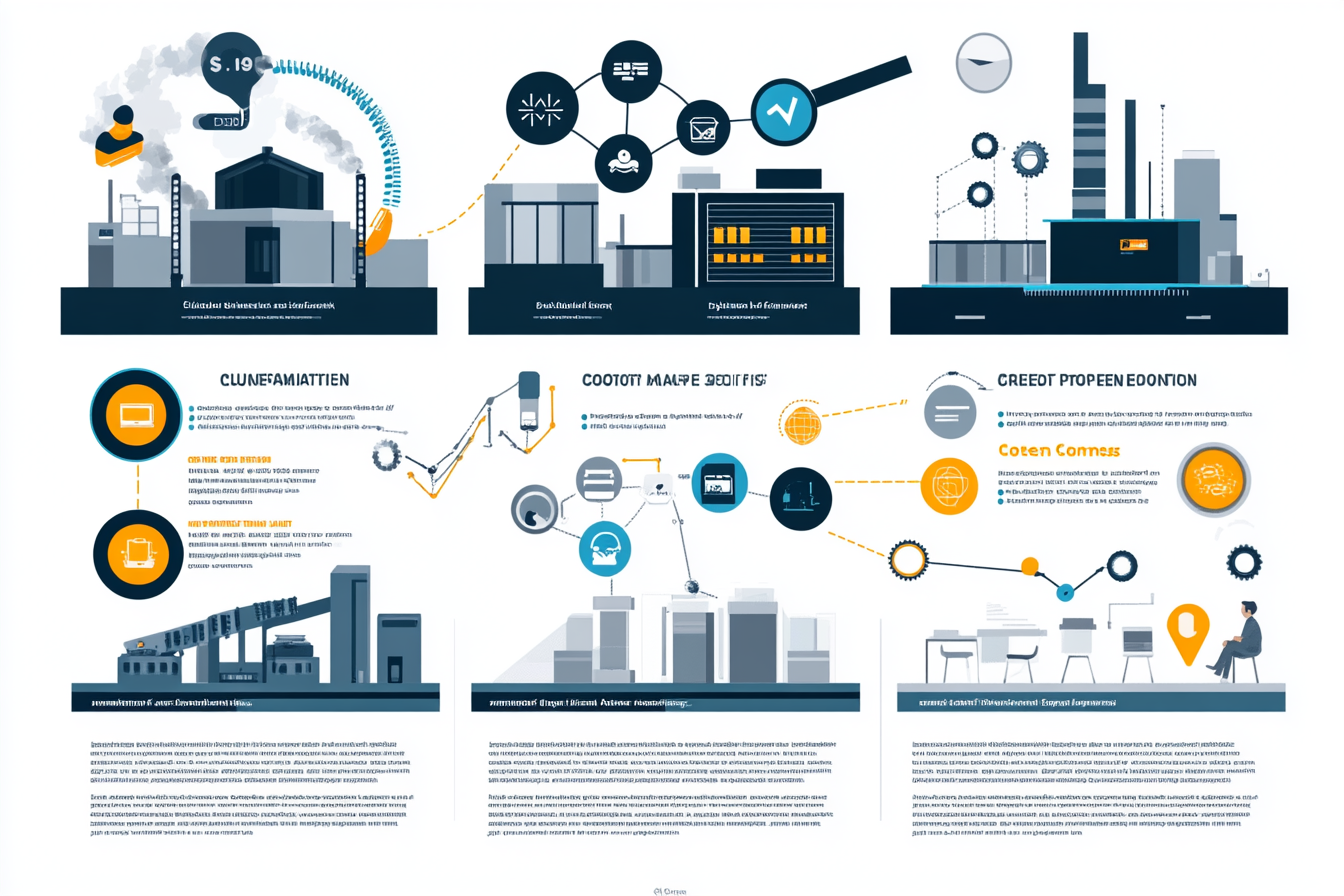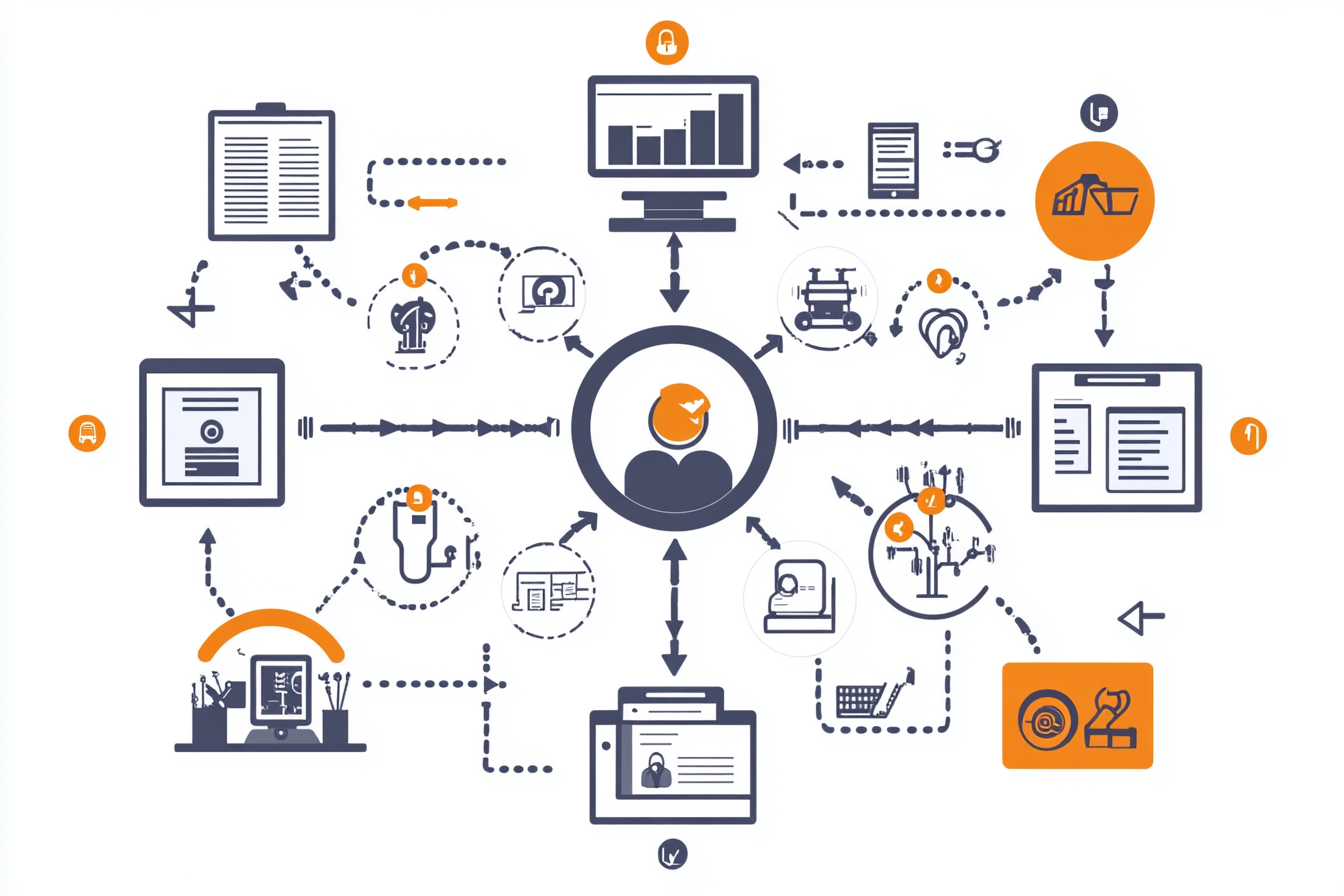Business Process Automation (BPA) software has emerged as a critical tool for organizations looking to streamline their operations, improve productivity, and achieve business objectives. By leveraging advanced technologies, BPA enables companies to automate complex processes beyond simple data handling, transforming how business functions are managed.
Key Takeaways
- Definition and Importance: Business Process Automation (BPA) reduces manual workloads, cuts costs, and enhances productivity, allowing organizations to focus on strategic activities.
- Market Growth: The BPA market was valued at $12.7 billion in 2021 and is projected to reach $41.8 billion by 2033.
- Core Features: Key features of BPA software include workflow automation, data security, integration capabilities, and compliance support.
- Interconnectivity with Other Technologies: BPA, RPA (Robotic Process Automation), and BPM (Business Process Management) are interrelated but distinct categories of automation.
- Cost Considerations: Pricing models for BPA software vary widely and may include free trials, monthly subscriptions, and tiered pricing based on features.
For expert guidance on implementing BPA solutions, visit ipsom.io.
Understanding Business Process Automation
Business Process Automation (BPA) involves the automation of complex business processes beyond basic data handling. It focuses on improving efficiency and empowering organizations to achieve their strategic goals. BPA shifts the emphasis from merely counting transactions to effectively running the entire business.
What is Business Process Automation (BPA)?
- Definition: BPA automates processes across various departments to enable seamless workflows.
- Enhanced Productivity: By integrating advanced technologies, BPA reduces manual workloads and frees up resources for strategic tasks.
- Modernization: Vital for organizations aiming to modernize operations and adapt to market changes.
Importance of BPA in Organizations
Implementing BPA can transform the way businesses operate by:
- Streamlining Operations:
- Reduces redundancies
- Aligns tasks with organizational goals
- Improving Productivity:
- Employees focus on high-value activities
- Reduces time spent on repetitive, manual tasks
- Reducing Operational Errors:
- Minimizes human error
- Leads to more accurate outcomes
- Cutting Costs:
- Lowers costs associated with manual processes
- Increases efficiency and reduces the time taken for critical tasks
By adopting BPA, organizations can realize their full potential and maintain a competitive edge in their industries.
The Business Process Automation Market
- The Business Process Automation (BPA) market is rapidly expanding, highlighting its growing importance in modern organizations.
- In 2021, the market was valued at $12.7 billion.
- It is projected to reach $41.8 billion by 2033.
- This growth reflects increasing recognition of BPA’s role in enhancing efficiency and productivity.
Current Market Trends
Several current market trends emphasize the evolution of BPA:
-
Shift from Manual Processes to Automation: Organizations are moving away from manual processes to automation, allowing a greater focus on strategic objectives.
-
Broad Scope of BPA: BPA encompasses a wider range of process automation compared to other technologies:
- Robotic Process Automation (RPA): Primarily focuses on automating repetitive tasks.
- Business Process Management (BPM): Related to process modeling and improvement practices.
-
Increased Demand for Seamless Integration: As businesses adopt BPA software, there is a rising demand for solutions that integrate smoothly with existing systems.
-
Enhanced Data Security Needs: Organizations are prioritizing data security within their BPA solutions.
-
Need for Adaptability: The demand for sophisticated BPA solutions that can adapt to various organizational workflows is increasing, reflecting the dynamic nature of business environments.
Key Benefits of BPA
Business Process Automation (BPA) offers significant benefits that can transform how organizations operate. By integrating BPA solutions, companies can achieve:
- Improved Operational Efficiency
- Enhanced Customer Engagement
- Cost Reduction
Operational Efficiency
- Maximized Efficiency: BPA automates routine tasks, which leads to:
- Increased productivity
- Employees focusing on higher-value activities
- Enhanced Decision-Making: Streamlined processes lead to:
- Faster choices
- More informed decisions
Customer Engagement
- Improved Customer Engagement: Automation ensures:
- Timely and accurate service delivery
- Faster response times, resulting in:
- Increased satisfaction
- Higher loyalty
- Consistent Service: Enhances the overall customer experience, making interactions smoother.
Cost Reduction
- Cost Reduction: Implementing BPA helps organizations:
- Eliminate manual processes
- Reduce operational errors and associated costs
- Effective Resource Allocation: Leads to better financial health by allowing businesses to:
- Allocate resources more effectively
BPA is not just a technological upgrade; it’s a strategic move towards a more efficient, responsive, and cost-effective organization. For more insights on harnessing the power of BPA, visit ipsom.io.
Selecting the Right BPA Software
Choosing the right BPA software is crucial for successfully automating your business processes. The first step involves understanding your unique business requirements. Identify the workflows that need automation and assess how they align with potential software solutions.
Important Considerations
Consider workflow compatibility with your existing systems. Ensure the software can integrate smoothly to avoid disruptions. Additionally, evaluate different pricing models. Some software offers free trials, while others may have monthly subscriptions or tiered pricing based on features. Choose a model that aligns with your budget and needs.
Common Features to Look For
-
Workflow Automation: Look for software that streamlines task management. Efficient task assignments lead to smoother operations.
-
Data Security: Ensure the software provides robust security features. Protecting sensitive information is vital for maintaining trust.
-
Integration Capabilities: The software should easily connect with your existing systems. This enhances functionality and saves time.
- Compliance Features: Check for tools that help maintain adherence to relevant regulations. Compliance is essential for reducing risks associated with legal issues.
Choosing the right BPA software can significantly impact your organization's efficiency and effectiveness. For expert help, visit ipsom.io.
Use Cases for BPA Software
Business Process Automation (BPA) software can transform numerous organizational functions by automating repetitive and time-consuming tasks. By incorporating BPA, companies can enhance efficiency and streamline their operations.
Applications in Various Processes
-
Employee Onboarding:
- Streamlines onboarding by automating:
- Training schedules
- Document handling
- Compliance procedures
- Allows HR teams to focus on integrating new hires instead of managing paperwork.
- Streamlines onboarding by automating:
-
Purchase Order Processing:
- Reduces delays through automation.
- Manages the entire procurement cycle, including:
- Order creation
- Approval
- Tracking
- Ensures timely deliveries and accurate records.
-
Workflow Management:
-
Enhances task efficiency with:
- Automated notifications
- Tracking of tasks
-
Fosters accountability among team members, leading to smoother project execution.
-
Process Mapping:
- Visualizes business processes for increased efficiency.
- Enables organizations to:
- Map out workflows
- Analyze processes
- Identify bottlenecks and improvement opportunities.
These use cases demonstrate how BPA software not only improves operational efficiency but also enhances overall productivity across various departments within an organization.
Core Features of Effective BPA Software
The core features of effective BPA software are essential for maximizing the benefits of automation within an organization. These features ensure that the software meets diverse business needs and can seamlessly integrate into existing workflows.
Functionality and Flexibility
A robust BPA software platform provides flexibility to automate various workflows across different departments. This allows organizations to tailor processes to their specific needs. Additionally, effective BPA software includes the capability for role assignment and user permission management. This ensures that team members have access to relevant features without compromising sensitive information or operational integrity.
Security and Compliance
Security is paramount in any software solution, especially when dealing with sensitive business data. Effective BPA software incorporates strong security measures, such as data encryption and customizable notifications for potential breaches or anomalies. Additionally, compliance features ensure that the software adheres to industry regulations and guidelines. This is vital for businesses that must meet legal requirements, as it helps mitigate risks related to non-compliance.
Furthermore, analytics capabilities enable organizations to monitor performance continuously. This data can identify areas for process optimization, helping businesses become more efficient and responsive to operational challenges.
For enhanced security in your automation processes, refer to ipsom.io.
Interconnection with Other Automation Technologies
Understanding the interconnection between different automation technologies is vital for organizations considering Business Process Automation (BPA). While BPA serves as an extensive category of automation, it is essential to differentiate and connect it with Robotic Process Automation (RPA) and Business Process Management (BPM).
BPA, RPA, and BPM Explained
BPA encompasses the automation of complex business processes, streamlining operations, and enhancing productivity. It extends beyond simple task automation, focusing on the overall efficiency of processes across the organization.
RPA is a specialized subset of BPA. It primarily automates repetitive, rule-based tasks using software bots. RPA excels in minimizing human intervention for tasks like data entry and processing, vastly reducing time and errors.
BPM takes a broader approach. It involves modeling, analyzing, and improving business processes. BPM ensures that workflows are efficient and align with strategic business objectives. While BPA enhances the processes, BPM provides the framework for continuous improvement.
These technologies are interrelated, with each serving distinct but complementary roles. Combining BPA with RPA and BPM can result in a cohesive automation strategy that maximizes efficiency, reduces costs, and drives significant business growth.
Major BPA Software Tools
Selecting the right Business Process Automation (BPA) software is crucial for organizations aiming to streamline their operations. Conducting a thorough analysis of various tools is essential, as they cater to different business needs.
Overview of Popular BPA Software
Several BPA software options lead the market:
- SweetProcess
- Excels in workflow documentation.
- Microsoft Power Automate
- Integrates seamlessly with other Microsoft applications.
- Flokzu
- Known for its user-friendly interface.
- Process Street
- Focuses on checklists and standard operating procedures.
- ProcessMaker
- Provides robust process modeling capabilities.
- Appian
- Offers a low-code environment for developing complex applications.
A comparative analysis of these tools based on the following criteria can greatly help organizations make informed choices:
- Features
- Integration options
- User experience
Pricing Models
Pricing for BPA software varies significantly:
- Free Trials: Many platforms offer these to allow users to evaluate features before making a commitment.
- Monthly Subscription Models: Common and often tiered based on:
- Number of users
- Feature sets
Understanding these pricing models ensures organizations select software that aligns with their budget while meeting their automation needs.
Explore effective BPA tools and pricing models at ipsom.io.
Conclusion
Business Process Automation (BPA) represents a transformative force for organizations. It offers the potential to streamline operations, boost productivity, and significantly reduce costs. As businesses increasingly rely on automation, the future prospects for BPA look promising.
Advancements in BPA technologies will continue to enhance efficiency and effectiveness across industries. Businesses will increasingly adopt BPA to unlock new opportunities and enrich their operational capabilities. By integrating BPA with other technologies like RPA and BPM, organizations will create a cohesive automation strategy that drives long-term success.
Investing in BPA now positions companies to thrive in an ever-evolving digital landscape. The growth of BPA solutions will ensure that businesses remain competitive and responsive to market demands. Embrace BPA to redefine how your organization operates and achieves its objectives.
FAQ
What is Business Process Automation (BPA)?
Business Process Automation (BPA) involves automating complex business processes to enhance efficiency and productivity. It goes beyond simple data management, allowing organizations to transform their operations effectively.
What are the primary benefits of using BPA software?
BPA software offers numerous benefits such as operational efficiency, cost reduction, and improved customer engagement. It streamlines processes, reduces errors, and allows teams to focus on strategic tasks.
How is BPA different from RPA and BPM?
BPA encompasses all forms of automation, while Robotic Process Automation (RPA) focuses on automating repetitive tasks using software bots. Business Process Management (BPM) involves a comprehensive approach to process modeling and continuous improvement.
What key features should I look for in BPA software?
When selecting BPA software, important features include workflow automation, data security, integration capabilities, and compliance support. These features ensure the software meets organizational needs and protects critical information.
What is the current market size and future growth potential for BPA?
The BPA market was valued at $12.7 billion in 2021 and is projected to reach $41.8 billion by 2033. This growth indicates a rising demand for BPA solutions across various industries.
How can BPA improve customer engagement and satisfaction?
BPA enhances customer engagement by streamlining processes and delivering services more quickly and accurately. This improved responsiveness leads to higher customer satisfaction.
What factors should I consider when selecting BPA software?
Key factors include your unique business requirements, compatibility with existing workflows, pricing models, and the specific features of the software. Evaluate these aspects to select the right solution.
Can BPA be customized to fit specific business needs?
Yes, many BPA solutions offer customization options, allowing businesses to tailor the software to their unique processes and requirements.
What are some typical use cases for BPA software in organizations?
Typical use cases include employee onboarding, purchase order processing, workflow management, and process mapping. These applications help streamline operations and improve efficiency.
How do pricing models for BPA software vary across different platforms?
Pricing models for BPA software can vary widely. They may include free trials, monthly subscriptions, and tiered pricing based on features and user access. It’s important to assess the options that best fit your budget and needs.










